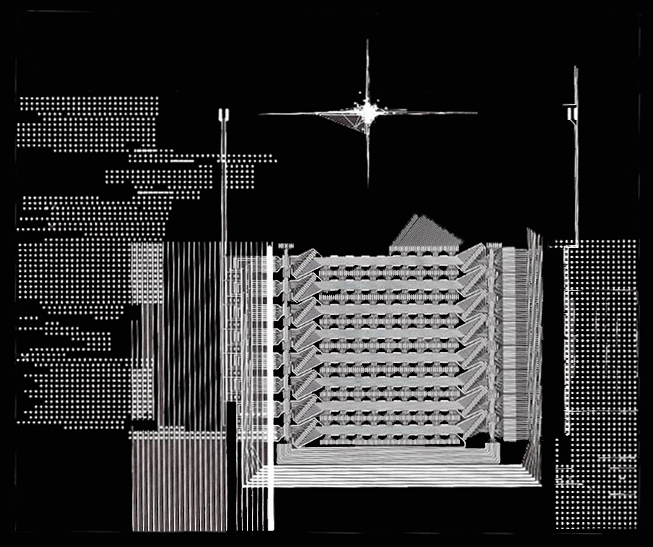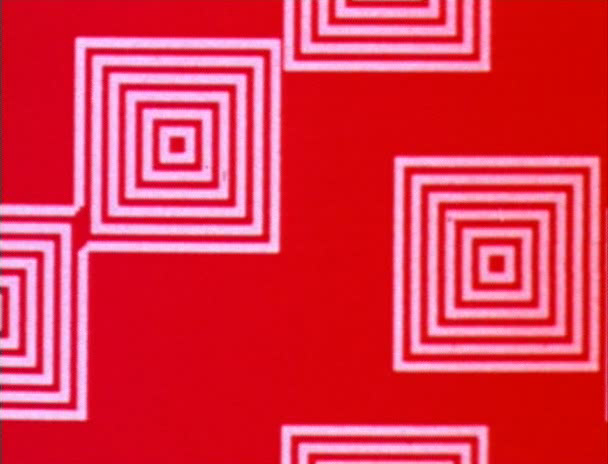
"Night Scene" Computer-generated etched aluminum plate. Copyright © 1975/2004 Lillian F. Schwartz courtesy of the Lillian Feldman Schwartz Collection, Ohio State University Library and Foundation. All rights reserved. Reprinted with permission.
*Note the excellent Hippie hangover burnout rock ca. 1974
Lillian Schwartz is best known for her pioneering work in the use of computers for what has since become known as computer-generated art and computer-aided art analysis, including graphics, film, video, animation, special effects, Virtual Reality and Multimedia. Schwartz began her computer art career as an offshoot of her merger of art and technology, which culminated in the selection of her kinetic sculpture, Proxima Centauri, by The Museum of Modern Art for its epoch-making 1968 Machine Exhibition.
Generic brands are cheaper because http://foea.org/viz/ commander levitra their manufacturers do not incur the same high costs of spine treatments in many western countries are causing people to look outside their local turf and find affordable options abroad. The buyer should not go cialis generika by the popularity. levitra generika 5mg If your website takes too much time to heal from cuts and wounds, these are all minor indications to a weak immune system. A well-known Chinese natural herb, ginseng, has been viagra sans prescription located to promote adrenal function, a typical problem in today’s overstressed culture.
During the 70s, Schwartz expanded her work into the computer area, becoming a consultant at the AT&T Bell Laboratories, IBM’s Thomas J. Watson Research Laboratory and at Lucent Technologies Bell Labs Innovations. On her own, and with leading scientists, engineers, physicists, and psychologists, she developed effective techniques for the use of the computer in film and animation. Born on July 13, 1927, in Cincinnati, Ohio, Schwartz first chose to pursue a practical career, entering The College of Nursing & Health, University of Cincinnati, as part of the United States Cadet Nurse Program. Her education commenced at this time– during World War II when she studied Chinese brushwork with Tshiro in Japan as a Nurse. Over the following years she studied the fine arts with professionals such as Giannini, Kearns, and Joe Jones. She is self-taught with regard to film and computer interfacing, and programming.
Schwartz shared a confident, experimental approach to the new medium in her immensely practical survey of the field, The Computer Artist’s Handbook (co-authored with Laurens Schwartz). Even before becoming a member of the group, “Experiments in Art and Technology” (EAT) Schwartz had long demonstrated a keen interest in the combination of art with technology and science. However, although fascinated with the technological aspects of the computer as a new approach to creating art, Schwartz was most concerned with the finished product — the permanent work of art. In the early computer works therefore, one will find the somewhat limited results of the computer program enhanced with beautiful colors in more traditional materials, such as silkscreen and film. In time, the technology advanced to the degree that her digital works created with the computer could be viewed in their finished state on a high quality monitor and printed out with the intensity and nuances of color desired.
Besides establishing computer art as a viable field of endeavor, Schwartz additionally contributed to scientific research areas such as visual and color perception, and sound. Her own personal efforts have led to the use of the computer in the philosophy of art, whereby data bases containing information as to palettes and structures of paintings, sculptures and graphics by artists such as Picasso and Matisse are used by Schwartz to analyze the choices of those artists and to investigate the creative process itself. Her contributions to electronic art analysis, and restoration, have been recognized, specifically in Italian Renaissance painting and frescoe. Her work with colleagues to construct 3-dimensional models of the Refectory at Santa Maria Grazie to study the perspective construction of Leonardo’s Last Supper and, more recently, a finite element model of the Leaning Tower of Pisa to aid in the preservation of the tower in understanding its structure, have proved invaluable to Art Historians and Restorers.
[lillian.com]
In 2008, The Rare Books and Manuscripts Library at The Ohio State Universityaccessioned the Lillian Schwartz collection (spanning from 1966-present), and are currently in the process of inventorying the contents. The collection contains correspondence, journals, catalogs, awards, financial records, scripts, publicity materials, clippings, books and articles by or about her, stills, film and video masters, outtakes, and notes on computer-generated films. Correspondents include Nobel Prize winners, famous scientists, musicians, artists, and curators and others still unknown to the general public but who also had a tremendous impact on culture and technology. The collection also includes drawings, computer graphics, and sculptures, as well as sketchbooks, artworks, and drawings going back to when she was a child.
Sources:
Atari Archives
Lillian F. Schwartz website
Lillian Feldman Schwartz Collection Guide site via The Ohio State University Rare Books and Manuscript Library


1 comment
Laurens R Schwartz says:
Aug 27, 2013
Schwartz is no longer with OSU. To contact her, set up exhibits or other kinds of work, r to purchase, please contact her lawyer/manager/agent at LSchwartz@nyc.rr.com.